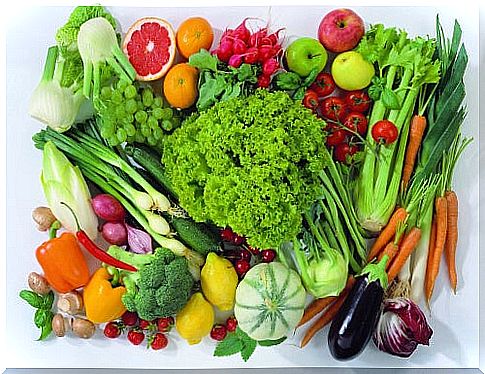Anti-nutritional Ingredients That Should Not Be Mixed With Others

Have you ever eaten a plate of lentils and then yogurt for dessert? Well, this combination is not the most successful as it contains some anti-nutritional ingredients that should not be mixed with others.
This is because there are products that may contain “anti-nutritional” ingredients. These are substances that could act in a way that hinders use:
- Fats.
- Proteins.
- Vitamins.
- Minerals.
- Carbohydrates.
Usually, in the case of processed foods, we can check the nutrient composition. But fresh food doesn’t always carry a nutritional label. Therefore, in this article we explain which substances prevent certain foods from being mixed with others.
What are anti-nutritional ingredients?
Anti- nutrients are chemicals naturally present in food that interfere with – or directly inhibit – the absorption of certain nutrients. This may be because they bind to them to form compounds that are eventually excreted in the faeces.
Anti-nutritional ingredients can also deactivate or reduce the activity of digestive enzymes.
These substances are mainly found in foods of plant origin as they are part of the plant’s defense mechanism against insects and other external problems.

What anti-nutritional ingredients should I watch out for?
Anti-nutrients are mainly found in vegetables, nuts, seeds and grains, although we can also find them in eggs, for example. The most common are listed below.
Phytic acid
Phytic acid or phytic acid is present in seeds, beans, nuts and legumes. According to an article published in the International Journal for Vitamin and Nutrition Research, it may negatively affect the absorption of zinc, iron, magnesium, copper, phosphorus and calcium.
It can also inhibit the digestive enzymes needed to break down starch and proteins into smaller fractions.
Oxalic acid
Oxalic acid, on the other hand, forms non-absorbable compounds with minerals such as iron, magnesium, zinc or calcium. These minerals are found in plant-based foods such as spinach, beetroot and Swiss chard. Oxalic acid is found mainly in chocolate, spinach and coffee.
Goitreating substances
Goitrogens are also known as goitrogens. They reduce the absorption of iodine from food and can be found in cabbage, cauliflower, turnips, etc. However, their effect can be reduced by heat treatment.
People suffering from hypothyroidism should be especially careful with these foods. Iodine is an important component in the functioning of the thyroid glands.
Trypsin and lecithin
These are proteins found in legumes, mainly white beans. They act as protease inhibitors, meaning the substances slow the digestion of proteins, according to a study published in the Journal of AOAC International.
Tannins
Tannins, or tannins, are present in wine and green tea. They have a chelating function, that is, they bind to certain metals, such as iron and zinc, and are then excreted in the urine or feces.

What foods should not be mixed with others?
Once we know what anti-nutrients are and what products they are in, we can conclude that there are products that should not be mixed together. In this way, we will prevent a decrease in the absorption of minerals or a slower digestion.
Here are some examples of common combinations that make digestion and absorption difficult:
- Course with lentils and yoghurt for dessert. As we said, legumes contain phytic acid, which makes it difficult for yogurt to absorb calcium. An orange or kiwi for dessert would be a more successful combination, as vitamin C supports the absorption of iron present in lentils.
- A glass of wine and a serving of nuts as an appetizer. It is normal that when we order a glass of wine they bring us nuts as a side dish. However, the tannins present in the wine prevent the absorption of iron and zinc from the nuts.
- Casserole with spinach and cheese. Green leafy vegetables contain oxalates, substances that reduce the absorption of calcium in cheese and dairy products.
- White beans with meat. If you want to make a white bean stew, it’s best to do it with vegetables, as the trypsin and lecithin present in the beans make it difficult to digest the meat.
Before you combine any foods in one meal, check to see if they contain anti-nutrients
Of course , just because some foods contain anti-nutrients doesn’t mean you need to stop eating them. While these foods have anti-nutritional properties, they contain many other health benefits.
Cooking and soaking food are the two primary techniques for inactivating anti-nutrients, in addition to avoiding certain combinations explained earlier. Take this into account, especially if you suffer from digestive problems, vitamin or mineral deficiencies, or autoimmune diseases.
In such cases, a specialist dietary specialist should be consulted.









